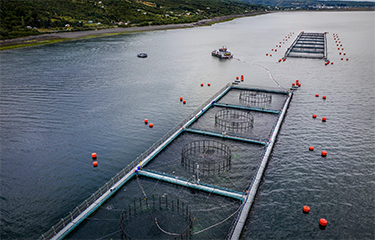Camanchaca posts positive Q2 on strong pricing, decreased costs

Santiago, Chile-based salmon farmer Salmones Camanchaca posted a positive Q2 2022, reversing the losses the company posted in 2021.
Camanchaca continued to benefit from high market prices during Q2 2022 while the company simultaneously decreased its costs, which combined to bolster its bottom line. Net profits for the quarter came in at USD 16.9 million (EUR 16.8 million), versus a loss of USD 8.4 million (EUR 8.36 million) during Q2 2021. Operating revenue for the quarter ended at USD 97.4 million (EUR 96.9 million), nearly double Q2 2021.
That increase in revenue came due to high average sales price of Atlantic salmon, which reached USD 7.81 (EUR 7.77) per kilogram of whole-fish equivalent (WFE) – up 48 percent from Q2 2021. Group EBITDA during the quarter reached USD 25.7 million (EUR 25.6 million), compared to a of USD 10.6 million (EUR 10.5 million) in Q2 2021.
The company harvested 12,446 MT WFE of Atlantic salmon during the second quarter, nearly double the amount it harvested in Q2 2021. Sales volume increased 36 percent to 11,677 MT WFE. Meanwhile, during Q2 2022, coho salmon sales volumes reached 506 MT WFE – 41.3 percent higher year-over-year.
“During this second quarter, the profitability of the business returned to normal as a result of the Atlantic salmon price increase, due to a high demand and a decrease in world supply. Added to the foregoing was the improvement in costs and the recovery of harvest volume, both affected in 2021 by algae blooms and oxygen challenges,” Salmones Camanchaca Vice-Chair Ricardo García said in a release.
However, at the same time, “inflationary and feed cost pressures continue and will be reflected in higher costs compare to our long-term trends estimates," García said.
At the beginning of 2021, two algae bloom incidents affected Camanchaca's operations in Reñihue fjord and Comau fjord, resulting in mortalities and a decline in the company’s harvest capacity and sales volume.
“These events have to some extent also impacted costs for this quarter, as the last fish impacted by the algae bloom were harvested in April 2022,” the company said.
Ex-cage harvest costs for the quarter came in at USD 4.05 (EUR 4.03) per kilogram live-weight, brought down 17.6 percent than the same period last year, when operations were severely impacted by the algae blooms and oxygen deficiencies to which García referred. Meanwhile, processing costs ended at USD 0.99 (EUR 0.98) per kilogram WFE, down from USD 1.44 (EUR 1.43) per kilogram WFE in Q1 2021, which Camanchaca attributed to higher processing volumes combined with positive results from efficiency projects implemented in its processing plants. The company has a long-term processing cost target of USD 1.00 (EUR 0.99) per kilogram.
Salmones Camanchaca’s biological performance also continued to improve during the quarter. Biomass mortality for Atlantic salmon was 1.7 percent, “reflecting that mortality is returning to normalized levels after a very challenging 2021,” it said, while the feed conversion ratio for the last 12 months was 1.13 – its lowest level ever.
During the first quarter of the year, Salmones Camanchaca grew its revenue to USD 80.9 million (EUR 80.5 million), up 16.3 percent compared to Q1 2021, which at the time the company mainly attributed to higher market prices and higher Atlantic salmon sales volume. Camanchaca’s Q1 2022 net profit reached USD 1.6 million (EUR 1.59 million) – up USD 16.8 million (EUR 16.7 million) from a loss of USD 15.2 million (EUR 15.1 million) in Q1 2021, when the company suffered USD 7.3 million (EUR 7.26 million) in losses due to the algae blooms in the Comau and Reñihue fjords.
The company said its production target for both 2022 and 2023 is in the 50,000 to 60,000 MT WFE range. For 2022 alone, it expects to harvest 45,000 to 47,000 MT WFE of Atlantic salmon and 5,000 to 6,000 MT WFE of Coho salmon. The total production capacity for both Atlantic and coho salmon is 65,000-70,000 MT WFE, which it expects to reach in three years. Salmones Camanchaca also participates in trout farming through a one-third share in a joint venture that uses Salmones Camanchaca farming sites, and currently it plans to harvest an average of 9,000 MT WFE per year until 2028.
It previously announced it expects to harvest between 8,000 and 9,000 MT of antibiotic-free salmon annually by 2024, as the company attempts to cater to more discerning markets. Camanchaca said it expects to further promote the new product in the United States, where it markets its mass-consumption brand Pier33.
Photo courtesy of Salmones Camanchaca






Share